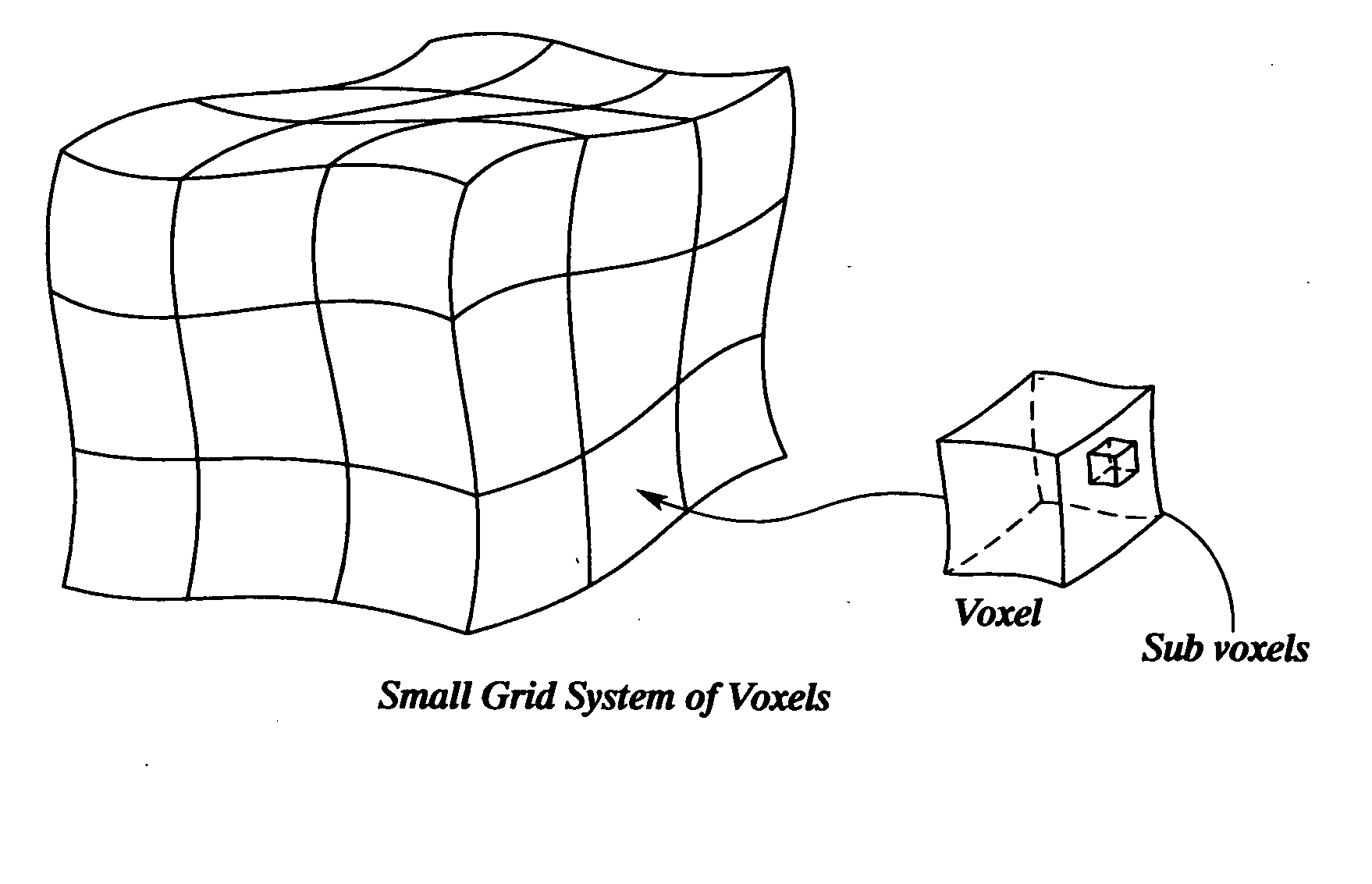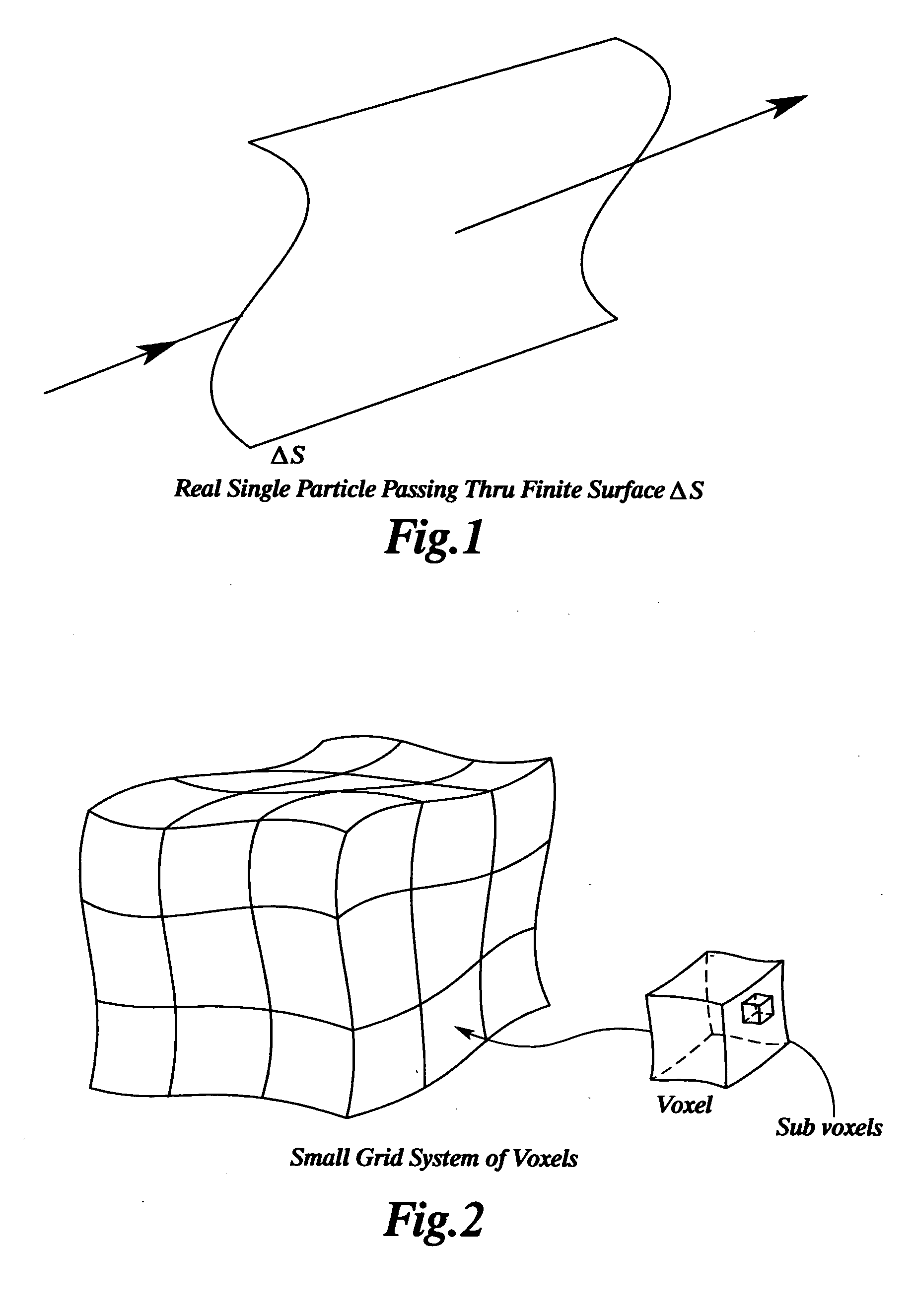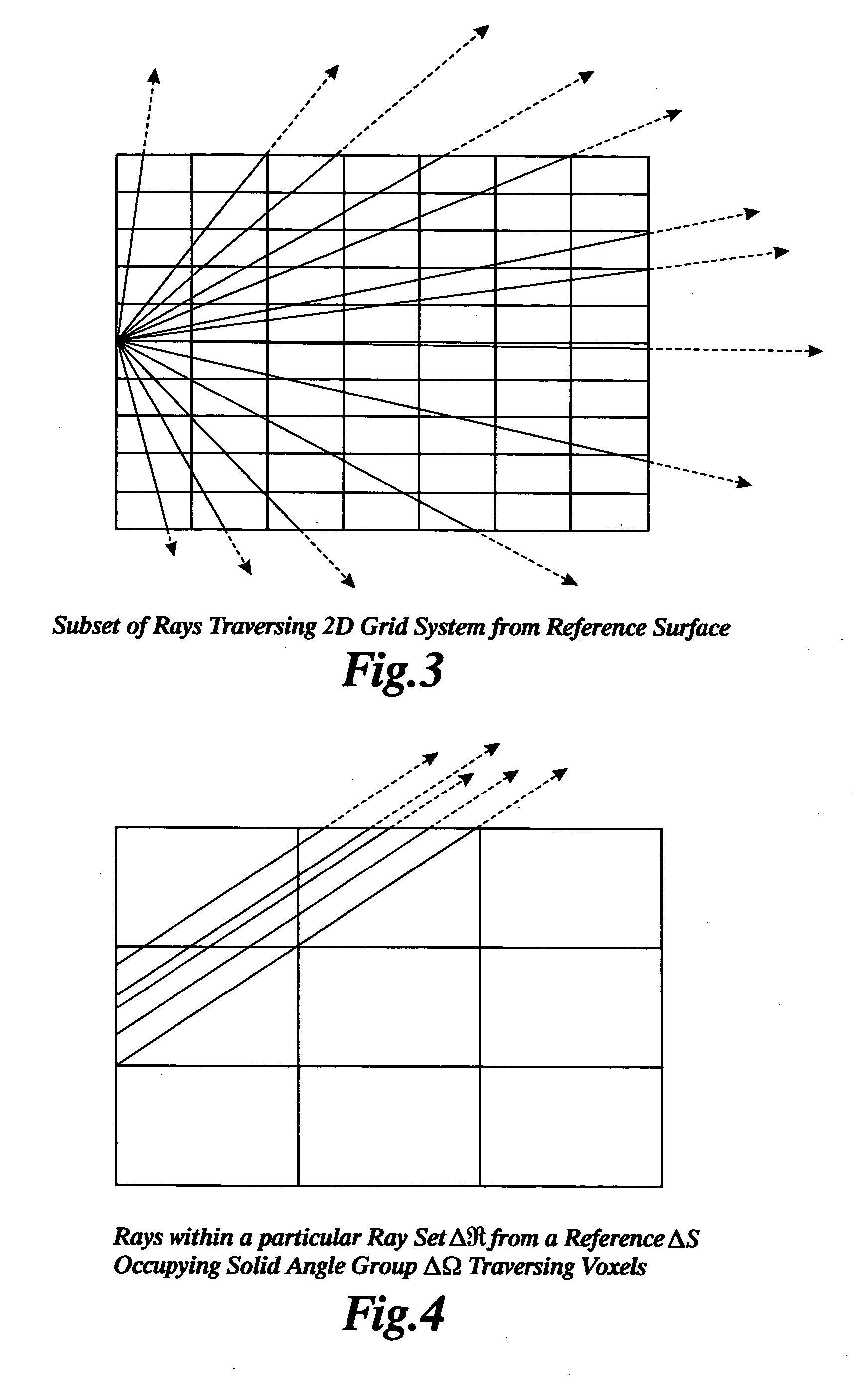Computation of radiating particle and wave distributions using a generalized discrete field constructed from representative ray sets
a discrete field and radiating particle technology, applied in cad techniques, process and machine control, nuclear engineering, etc., can solve the problems of irregular dose distribution profile, non-uniform beam, and difficulty in determining depth dose distribution within patients
- Summary
- Abstract
- Description
- Claims
- Application Information
AI Technical Summary
Benefits of technology
Problems solved by technology
Method used
Image
Examples
Embodiment Construction
[0049] Monte Carlo tracks each discrete particle history exactly and develops a stochastic result using hundreds of millions (if not billions) of exact particle histories (E. Cashwell & C. Everett, The Practical Manual on the Monte Carlo Method for Random Walk Problems, Pergamon Press (1959)). The present invention inverts this process by defining discrete particles that occupy computer memory in a detailed phase space—essentially representing millions of distinct phase space particle count values. Stated otherwise, the present invention exactly and efficiently computes distributed phase space discrete particle transport to local surfaces, function coefficients and volumes, reducing the results of these calculations to a multiplication field appropriate for each surface, function coefficient and volume. The approximation involved in the calculation is the assumption that the increment of the discrete particle itself is truly constant. Thereafter, “exact” calculations are used to det...
PUM
 Login to View More
Login to View More Abstract
Description
Claims
Application Information
 Login to View More
Login to View More - R&D
- Intellectual Property
- Life Sciences
- Materials
- Tech Scout
- Unparalleled Data Quality
- Higher Quality Content
- 60% Fewer Hallucinations
Browse by: Latest US Patents, China's latest patents, Technical Efficacy Thesaurus, Application Domain, Technology Topic, Popular Technical Reports.
© 2025 PatSnap. All rights reserved.Legal|Privacy policy|Modern Slavery Act Transparency Statement|Sitemap|About US| Contact US: help@patsnap.com



